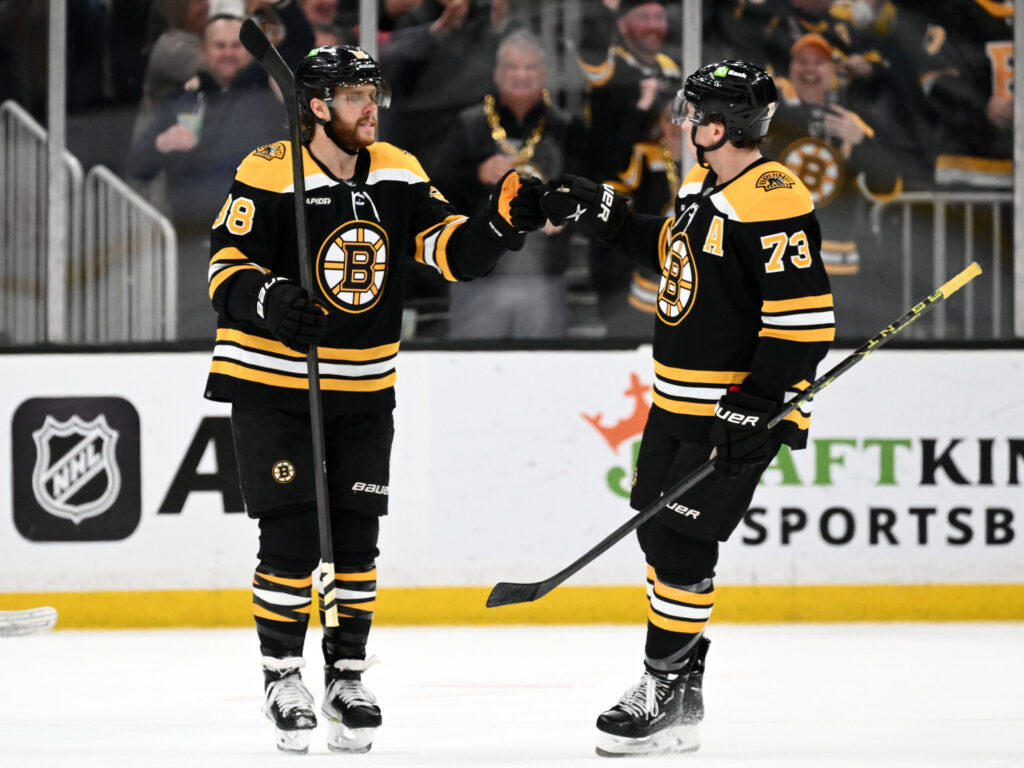The Boston Bruins are banking on a simple, yet notoriously fickle, hockey truth: health is the best offseason acquisition. After a 2024-25 campaign that saw their blue line decimated by injuries and defined by a chaotic, revolving door of personnel, General Manager Don Sweeney and new Head Coach Marco Sturm are betting the house that the return of their two defensive pillars will be enough to right the ship.
It’s a calculated gamble. On paper, the plan is sound. In reality, it places an immense amount of pressure on the surgically repaired ligaments and bones of a few key men. For a knowledgeable fanbase that endured a season watching numerous different defensive pairings get trotted out, the sentiment heading into 2025-26 is one of cautious, perhaps even skeptical, optimism. Let’s break down the state of the Bruins’ defense and see if this bet is likely to pay off.
Anatomy of a Collapse: A Look Back at the Battered Blue Line
To understand where the Bruins are going, one must first appreciate the wreckage they’re leaving behind. To call the 2024-25 season a “mess” for the Boston defense would be a profound understatement. The collapse was swift and brutal. It began in November when top-pairing stalwart Hampus Lindholm went down with a season-ending knee injury. The final nail in the coffin came in February when Charlie McAvoy, the undisputed number one and the engine of the entire defensive corps, was sidelined with an upper-body injury that also cost him the remainder of the season.
Compounding the injury catastrophe was the mid-season trade of Brandon Carlo to the division-rival Toronto Maple Leafs, a move that ripped another veteran presence out of a rapidly depleting locker room.
The result was a nightly scramble. The Bruins cycled through a staggering 12 different defensemen over the course of the season. It was a season of survival, not success, on the back end.
The Pillars are Back: McAvoy and Lindholm’s Return to the Fold
The entire defensive strategy for the 2025-26 Bruins hinges on two names: McAvoy and Lindholm. The front office believes that their simple reinsertion into the lineup is a more impactful move than any free-agent signing could ever be.
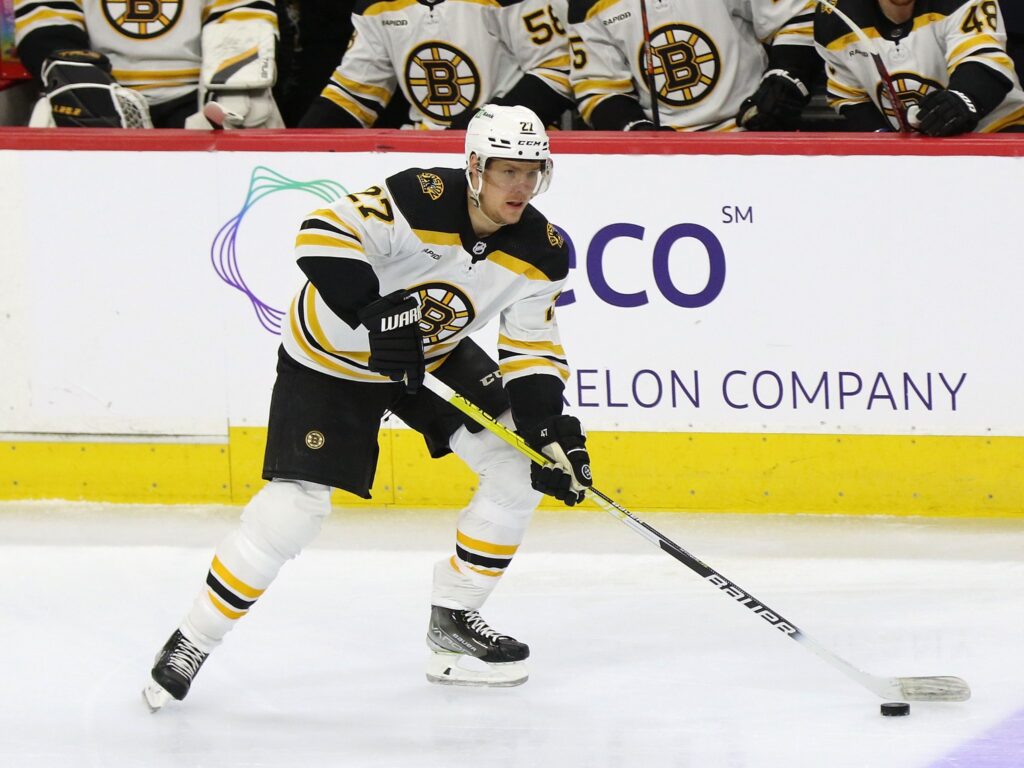
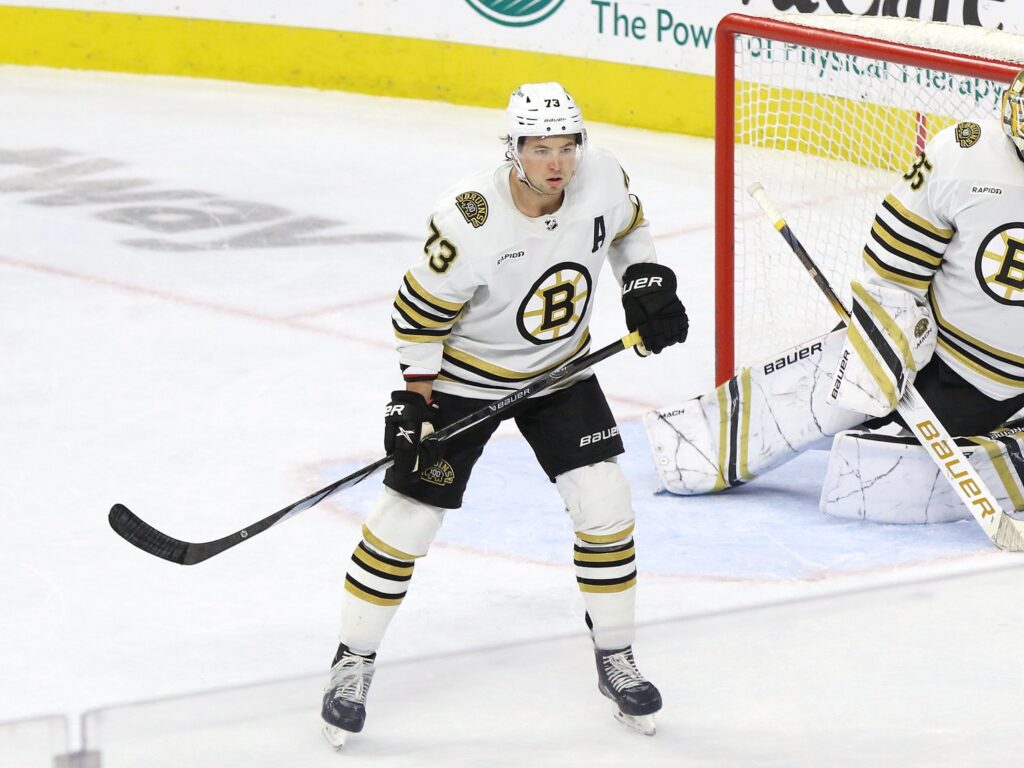
Charlie McAvoy isn’t just the Bruins’ best defenseman; he’s the team’s heartbeat. As former NHLer Thomas Hickey aptly stated, “the Bruins go as he goes.” An assistant captain, his return is paramount. A healthy McAvoy is a game-changer at both ends of the ice—a dynamic puck-mover, a punishing physical presence, and a player who logs the toughest minutes against the league’s best. His absence created a vacuum of leadership and elite talent that was simply impossible to fill.
Meanwhile, Hampus Lindholm is expected to be, as one source put it, “flying around on his new, fully healed knee cap.” Before the injury, Lindholm provided the smooth-skating, cerebral complement to the Bruins’ roster. His recovery is just as crucial.
Also on the EDGE – 6 Players Who Need a Big Bounce-Back Season in 2025-26
More Than Just Health: The Zadorov-Jokiharju Effect
While the return of the stars grabs the headlines, the stabilization of the second and third pairings may be the most important tactical development from last season’s chaos. After the trade deadline, Nikita Zadorov emerged as a force on the Boston blue line. He became more than just a towering physical presence; he grew into a leader, a “different player” who relished the increased responsibility.
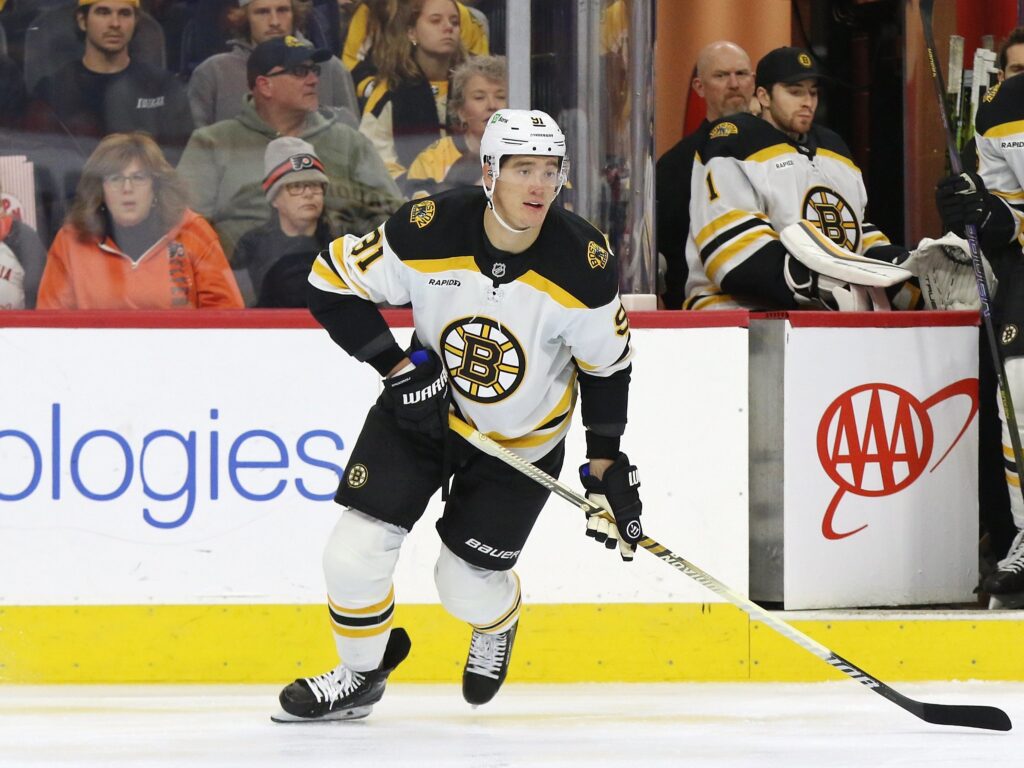
His partner in this emergence was Henri Jokiharju, acquired to fill the void left by Brandon Carlo. The duo quickly formed a formidable shutdown pairing, a classic blend of Zadorov’s brute force and Jokiharju’s steady, positional game. The front office clearly liked what they saw, as Sweeney made it a priority to re-sign Jokiharju ahead of free agency.
This pairing can give Coach Sturm a crucial tool he lacked for most of last year: a reliable duo he can deploy against tough competition.
Offensive Spark, Defensive Questions: The Lohrei Conundrum
Mason Lohrei, after a trial by fire last season, established himself as a legitimate offensive threat from the blue line, particularly on the man advantage. He finished the season with an impressive 33 points, 16 of which came on the power play.
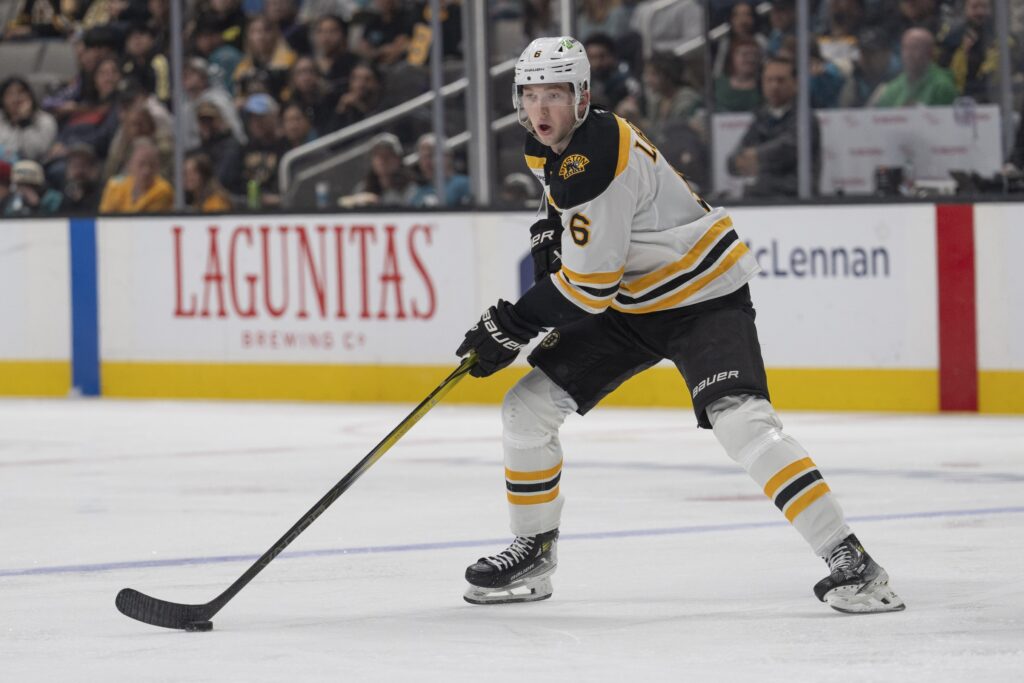
The defensive side of his game, however, remains a work in progress. Coach Sturm has openly noted that Lohrei needs to improve in his own end. The solution for 2025-26 may be sliding him down to the third pair, providing him with more sheltered minutes and a chance to hone his defensive craft without the pressure of facing top-six forwards most shifts.
A potential partner, Andrew Peeke, is the perfect foil. Peeke is not flashy, but he proved his value last season as he “ground out tough minutes” and, according to team insiders, “always seemed to make the right decisions” under immense pressure. He is the stay-at-home, steadying presence that can provide a defensive safety net for a rover like Lohrei. This pairing has a clear identity: Peeke minds the store while Lohrei is given the green light to create offense. If Lohrei can take the next step defensively, this could become one of the league’s more effective third pairs.
The Elephant in the Room: Goaltending and Cap Constraints
No discussion of defense is complete without looking at the last line of defense. Jeremy Swayman is the undisputed number one, a franchise goaltender capable of stealing games. The drama, however, is brewing behind him. Joonas Korpisalo, the current backup, is reportedly unhappy with his playing time, and rumors are swirling that multiple teams have kicked the tires on his availability.
Also on the EDGE – Bruins in the Hot Seat: Which Players Need a Big Bounce-Back Season?
Should Korpisalo be moved, the Bruins have a ready-made replacement in Michael DiPietro, who is coming off a spectacular season in the AHL with the Providence Bruins. DiPietro posted a sparkling 2.05 goals-against average and a .927 save percentage, numbers that scream “NHL-ready.” This situation bears watching, as a disgruntled backup can become an unnecessary distraction.
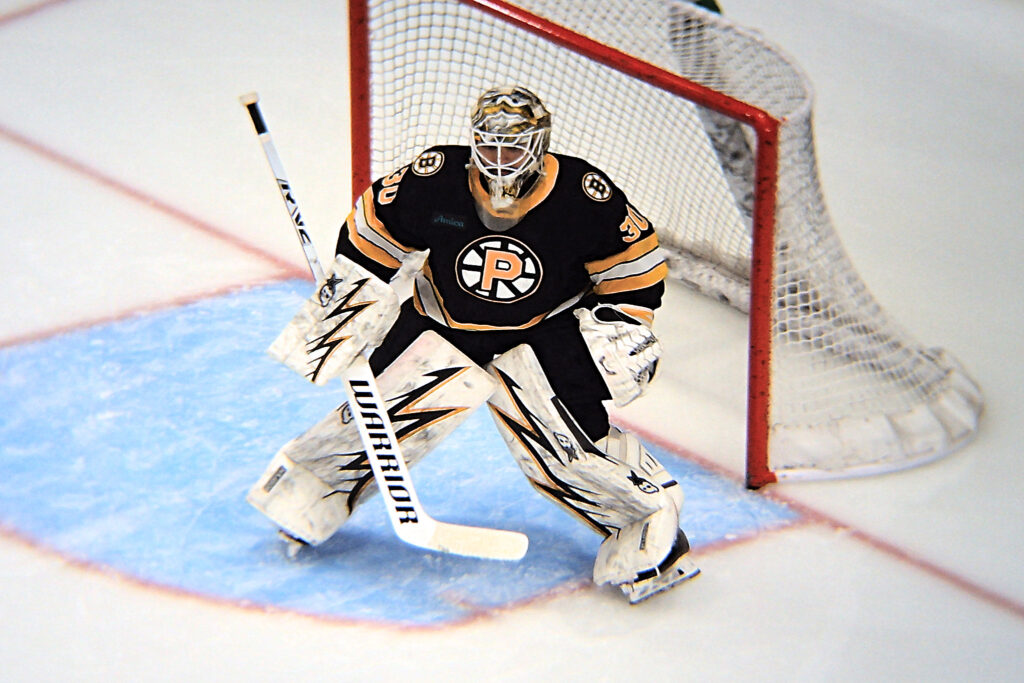
Financially, the Bruins are tight against the cap. With a total allocation of $93,418,333 against the $95,500,000 ceiling, they have just over $2 million in cap space. That doesn’t leave much room for in-season additions. Adding to the squeeze is the $615,000 in retained salary for Brandon Carlo, a parting gift from last season’s moves. While Sturm mentioned the possibility of adding “another guy or two” before Jokiharju signed, the reality is that the roster is likely set. This is the group they’re going to war with.
Also on the EDGE – Inside the Boston Bruins’ Risky Forward Corps Retool
The plan is in place. The pieces, if healthy, are there. The Bruins are betting that a full 82-game season from McAvoy and Lindholm, supported by a newly solidified shutdown pair and a promising third duo, will be enough to vault them back into the league’s elite. On paper, it’s a compelling argument. But as every hockey fan knows, the game isn’t played on paper. Now, we wait to see if the gamble pays off.
Created with the aid of Gemini AI
